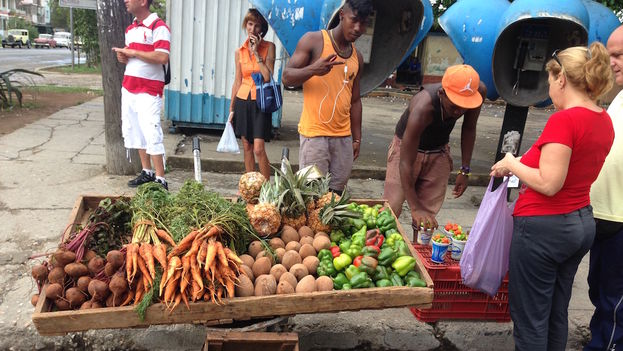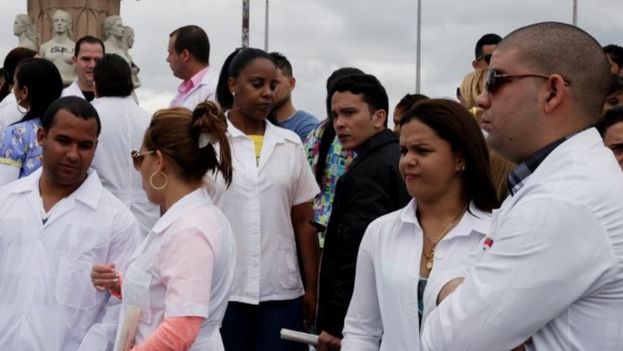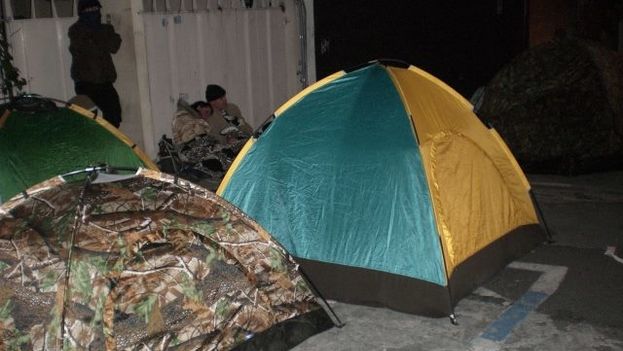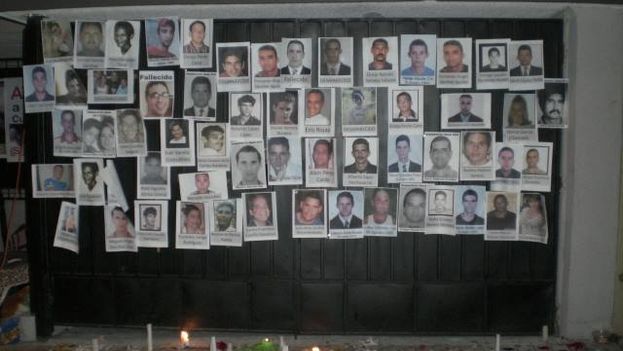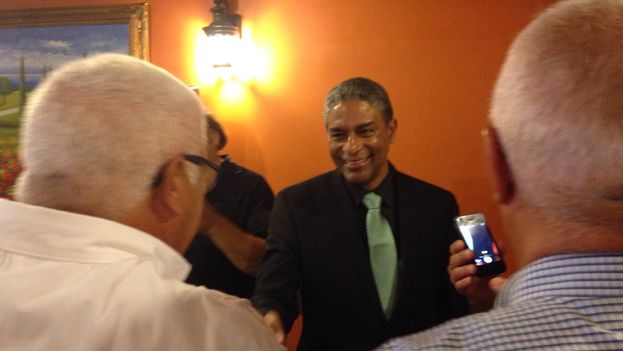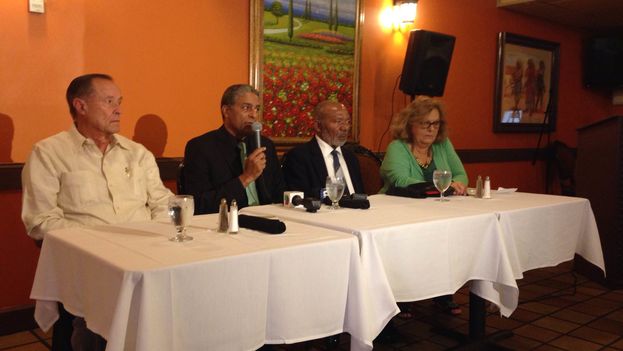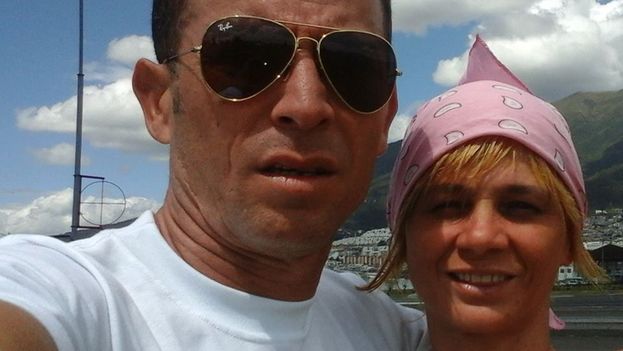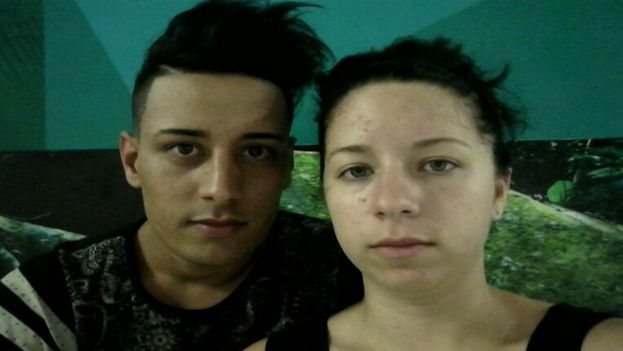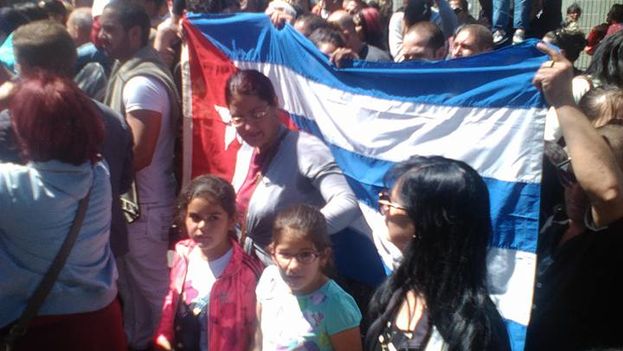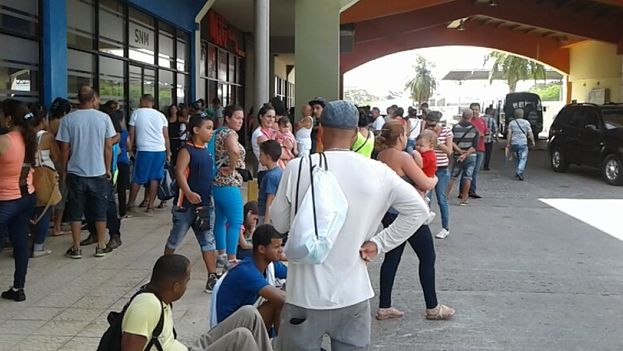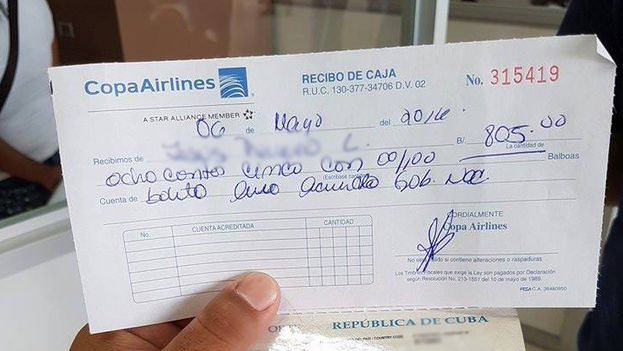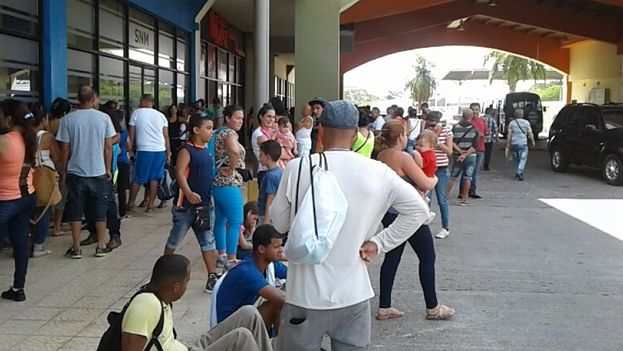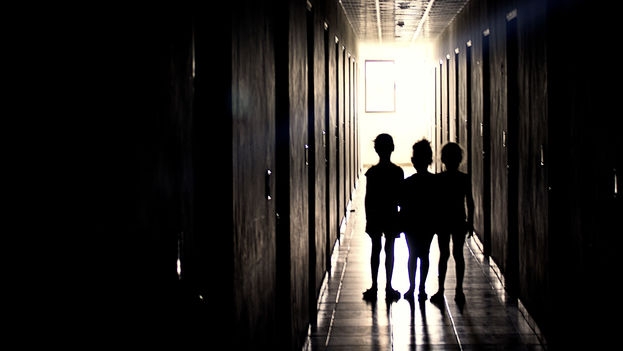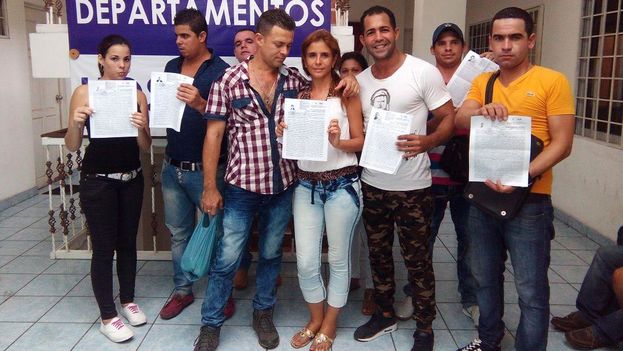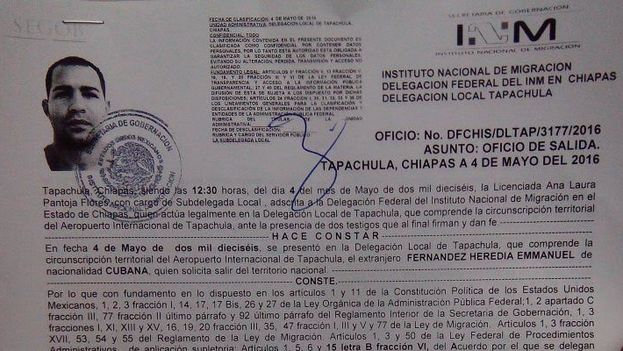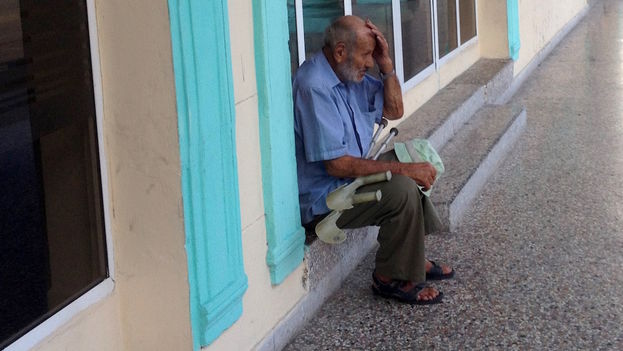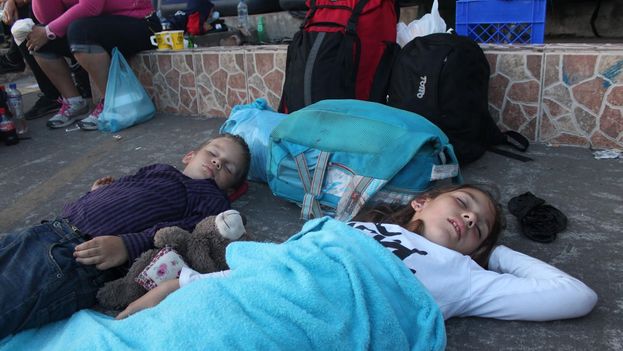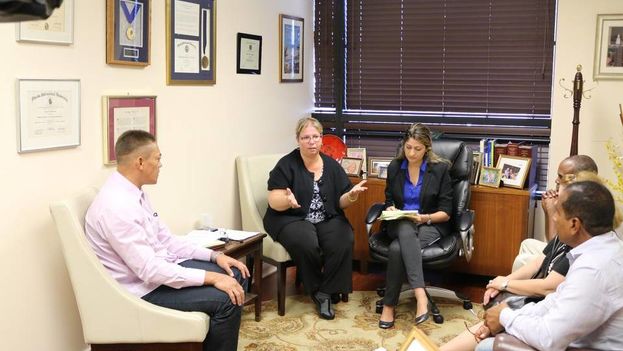“The situation of doctors and aid workers Cubans is terrible. The whole time you are living under the threat that they send you back to Cuba and you lose your mission. You’re afraid they’ll take away all the money – which is in official accounts in Cuba – and if they take some disciplinary measure they will revoke the mission,” says Rodriguez. While working in a clinic lab in the “Barrio Adentro” mission, her salary of 700 Cuban pesos (about $26 US) is deposited in Cuba and she has the right to an account of 280 dollars a month and a card giving her 25% off on purchases at Foreign Exchange Collection Stores (TDRs) in Cuba. continue reading
In 2014, recognizing that the island earned more than 8.2 billion dollars from the “export of health services, the Cuban government agreed to increase the wages of workers in the sector (to $61 US per month). However, this increase, which came after the dismissal of 109,000 workers, has not raised the pay of Cuban doctors to the average pay for doctors internationally.
In 2014, recognizing that the island earned more than 8.2 billion dollars from the “export of health services, the Cuban government agreed to increase the wages of workers in the sector
Rodriguez arrived in Venezuela from her hometown of Holguin, where she worked in the Máximo Gómez Báez polyclinic after earning a degree in Clinical Laboratory. The desire to economically improve the lives of her 13-year-old daughter led her to choose to travel outside the country in one of the coveted medical missions abroad.
Cuba maintains a “contingent” in Venezuela composed of 28,811 health collaborators, a priority for the government which, since the late Hugo Chavez came to power in 1999, has invested over 250 billion in the industry, according to statements by President Nicolas Maduro .
The scheme of paying for medical services with oil has been denounced on numerous occasions by analysts critical of the Caracas government, who accuse it of being a cover for subsidies to Havana, which eventually resells some of the oil on the international market.
Rodriguez has no family in the United States, where she has lived since filing for a visa through the Cuban Medical Professional Parole Program, offered by the US embassy, and has combined several jobs to raise the money and buy a plane ticket for her daughter. However, when the family took the child to the offices of Cuba’s Interior Ministry to request a passport, she was denied that right, based on the claim that her mother “is serving a mission in Venezuela.”
“I can not understand how in Cuba I can be considered as a doctor on mission, if for more than one year I have been in the United States. Someone has to be collecting the money that the Venezuelan government is paying for me,” says Rodriguez.
According the US Citizenship and Immigration Service, in the last fiscal year it received 2,552 petitions for the Cuban Medical Professional Parole Program
According the US Citizenship and Immigration Service, in the last fiscal year it received 2,552 petitions for the Cuban Medical Professional Parole Program, an initiative established under Republican president George W. Bush, which allows a “medical professional currently conscripted to study or work in a third country under the direction of the Government of Cuba” to enter the United States with a visa. Since taking effect in 2006, more than 8,000 professionals have benefited from the program.
Solidarity Without Borders, an non-profit located in the United States, told 14ymedio that in recent years there has been an increase in doctors and healthcare workers taking advantage of the US government program, although not all are accepted, as demonstrated by the 367 applications denied in the last year.
Rodriguez said that upon reaching Venezuela she was assigned to the state of Falcon, along with other Cubans. “Everything in Venezuela is a lie. They forced us to throw out the reagent CKMB, a product in short supply in the nation, but we had to throw it out for the record in the statistics used so we can import more. This was the case with alcohol, bandages, medicines… Everything was produced in Cuba and the Venezuelan government paid,” she denounces.
“We made up lists of people treated and they forced us to live with the minimum, while Cuba took all the money,” she explained. In the time Rodriguez worked as a specialist, Havana allocated to each staffer around 3,000 Bolivars (about $300 US), a figure that has escalated substantially since the beginning of the inflationary crisis in Venezuela and the relentless devaluation of the currency. “Sometimes, I had to have my little ‘under the counter’ job to support myself. Thanks to God, many Venezuelans sympathize with the Cubans and help us,” she explains.
“Perhaps what happened with me is when I decided to escape, I went to the mayor and told him about the whole disaster created by the CDI (Integral Diagnostic Center) and now they want revenge because I denounced it,” she says.
Reinaldo is a Cuban doctor who worked in Anzoategui state, but does not want to give his last name for fear of being punished. “We started out earning 3,000 Bolivars and now we’re at 15,000 Bolivars (about 15 dollars on the black market). The odd things is that it doesn’t mean anything to multiply the wages if they aren’t worth anything in real life,” he laments.
“We started out earning 3,000 Bolivars and now we’re at 15,000 Bolivars (about 15 dollars on the black market)… which isn’t worth anything in real life”
“The conditions we work in are the worst, we are the wage slaves of Cuba. They keep us in groups. Since I arrived, I’ve lived with three doctors from different regions of the island, I have to share my room with someone I don’t know and at six in the evening every day I have check in, like I’m at home.”
The authorities of the Cuban medical mission in Venezuela justify the daily check on aid workers and maintain that it is to protect them due to the high levels of violence in the neighborhoods they serve. The doctors, for their part, consider that it is a practice to keep them under surveillance.
“There are a lot of Cuban State Security agents. The role of these people is to ensure we don’t escape from the mission. On arriving in Venezuela they ask us if we have family abroad, especially in the United States. We all say no, even if we do, because otherwise the surveillance is worse,” says the physician.
The economic situation in the country has become so precarious, he says, that in his last vacation on the island he had to buy cleaning and bath soaps and toothpaste to bring the Venezuela. “When we got here, it was a paradise, they had everything we didn’t have in Cuba. Today it’s the exact opposite. We come thinking about helping our families and it turns out that they are the one who are helping us. If it weren’t for my brother who lives in Miami and sends me remittances, I don’t know what I would do.”
“When we got here, it was a paradise, they had everything we didn’t have in Cuba. Today it’s the exact opposite.”
According to several doctors consulted by this newspaper, cases of violence in which Cuban healthcare workers have been involved are kept secret, even if the person dies.
“It is impossible that we wouldn’t be assaulted here, because here everyone is assaulted. A stray bullet, a thug who doesn’t like you, we’re exposed to all this,” says a Cuban doctor who prefers not to give her name. “One day two children assaulted me, they couldn’t have been more than 12. I had to give them all the money I had, because the guns they were playing with were real,” she says.
The relations of the Cuban medical personnel are also regulated. “They warn you that things can go badly for you if you deal with the squalid (a word used in Venezuela for regime opponents similar to the use of “scum” and “worm” in Cuba).” The doctor says that the intimacy between Venezuelans and Cubans is formally forbidden, “although people manage.”
In the 13 years that Cuban medical missions have been operating in Venezuela, more than 124,000 specialists have passed through that nation. Thousands have fled to the United States and other countries in search of better living conditions. In 2015, Cuba assured “health professionals who have left the country that under the current immigration policy,” if they returned to the island, they would be guaranteed “a work location similar to what they had previously.” However, they put a limitation on it: the returnees will again be under the obligation to request special permission to travel outside the country.
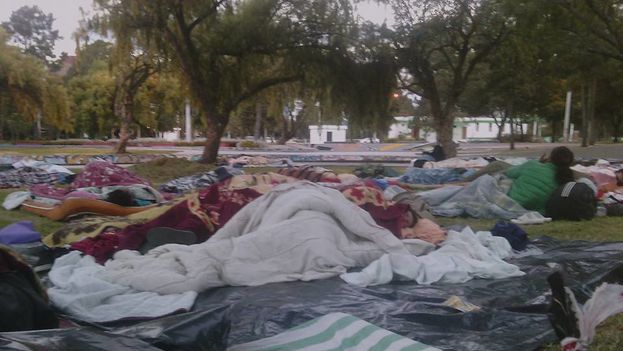
![]() 14ymedio, Mario Penton, Miami, 2 July 2016 — With the language of the Cold War, the Embassy of Cuba in Ecuador has responded through an official statement to the situation of thousands of migrants from the island who are undocumented in Ecuador and are asking for a humanitarian bridge that allows them to reach the United States.
14ymedio, Mario Penton, Miami, 2 July 2016 — With the language of the Cold War, the Embassy of Cuba in Ecuador has responded through an official statement to the situation of thousands of migrants from the island who are undocumented in Ecuador and are asking for a humanitarian bridge that allows them to reach the United States.
